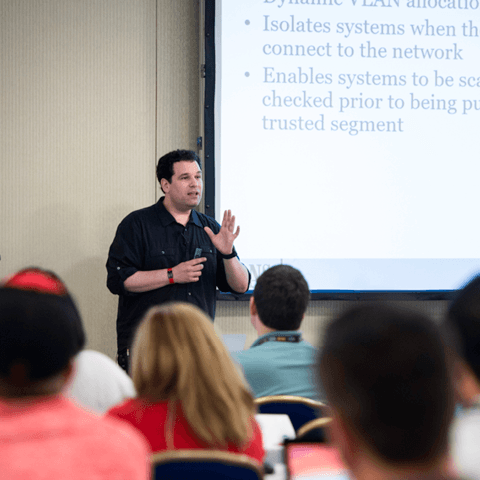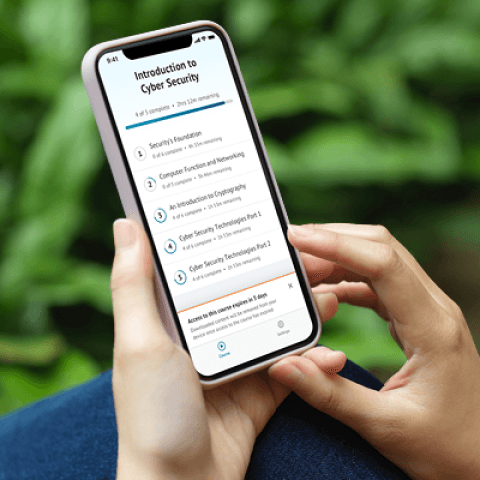SEC595: Applied Data Science and AI/Machine Learning for Cybersecurity Professionals


Experience SANS training through course previews.
Learn MoreLet us help.
Contact usBecome a member for instant access to our free resources.
Sign UpWe're here to help.
Contact Us
Apply your credits to renew your certifications
Attend a live, instructor-led class at a location near you or remotely, or train on your time over 4 months
Course material is for individuals with an understanding of IT or cyber security concepts
Apply what you learn with hands-on exercises and labs
Smartphones Have Minds of Their Own. Don't Make the Mistake of Reporting System Evidence, AI Created Date, Incorrect Locations, Smartphone Suggestions, or Application Cache as User Activity.
This class has been amazing. I've learned so much in such a short amount of time. I'm ready to go back to work and use these new skills.
This mobile forensics course provides examiners and investigators with advanced skills to detect, decode, decrypt, and correctly interpret evidence recovered from mobile devices. FOR585 is continuously updated to keep up with the latest file formats, malware, smartphone operating systems, third-party applications, acquisition shortfalls, extraction techniques (how to get full file system or physical access) and encryption. It offers the most unique and current instruction to arm you with mobile device forensic knowledge you can immediately apply to cases you're working on the day you get back to work.


Heather brings 24+ years of experience supporting government agencies, defense contractors, law enforcement, and Fortune 500 companies. Her extensive case experience spans fraud investigations, crimes against children, counterterrorism, and more.
Read more about Heather Barnhart

Domenica brings 20 years of mobile forensics experience supporting U.S. federal law enforcement and intelligence agencies while leading global training programs for elite investigative units including FBI and military special operations forces.
Read more about Domenica (Lee) CrognaleExplore the course syllabus below to view the full range of topics covered in FOR585: Smartphone Forensic Analysis In-Depth.
This section provides an in-depth introduction to smartphone forensics, focusing on the unique file systems of iOS and Android devices and the specialized tools and techniques needed to analyze them. Students will explore smartphone components, acquisition methods, data decoding strategies, and SQLite database analysis through hands-on labs.
This section focuses on advanced Android forensics, emphasizing file system structures, encryption, and data recovery from Full File System acquisitions. Students will learn to manually decode data, parse third-party applications, recover deleted artifacts, and use tools like ADB when commercial solutions fall short.
Apple iOS devices contain substantial amounts of data that can be decoded and interpreted into useful information. Proper handling and parsing skills are needed to extract information from iOS devices and correctly interpret the data. This course section will cover extraction techniques using jailbreaks and exploits to obtain a Full File System acquisition.
This section explores forensic analysis of iOS and Android backups, cloud data extractions, and smartphone malware. Students will learn to extract, decrypt, and manually decode backup files, identify malware, and recover data from devices with deleted or hidden content. Hands-on labs focus on advanced techniques for uncovering tampered or compromised data.
Section five focuses on advanced forensic analysis of third-party applications, secure messaging platforms, and mobile browsers across iOS and Android devices. Recover deleted or hidden data missed by commercial tools using SQL queries and custom Python scripts. Learn to decode app artifacts, parse browser activity, and script forensic solutions.
This final course day will test all that you have learned during the course. Working in small groups, students will independently analyze three smartphones and solve a cold case scenario relating to a real-world smartphone forensic investigation. You’ll decode data, form an investigation hypothesis, develop a report, and present findings.
Malware analysts face attackers’ capabilities head-on, ensuring the fastest and most effective response to and containment of a cyber-attack. You look deep inside malicious software to understand the nature of the threat – how it got in, what flaw it exploited, and what it has done, is trying to do, or has the potential to achieve.
Explore learning pathResponsible for identifying and assessing the capabilities and activities of cybersecurity insider threats; produces findings to help initialize and support law enforcement and counterintelligence activities and investigations.
Explore learning pathThis expert applies digital forensic skills to a plethora of media that encompass an investigation. The practice of being a digital forensic examiner requires several skill sets, including evidence collection, computer, smartphone, cloud, and network forensics, and an investigative mindset. These experts analyze compromised systems or digital media involved in an investigation that can be used to determine what really happened. Digital media contain footprints that physical forensic data and the crime scene may not include.
Explore learning pathResponsible for analyzing digital evidence from computer security incidents to derive useful information in support of system and network vulnerability mitigation.
Explore learning pathCybercrime Investigators navigate dark web forums, trace cybercriminal activity, and conduct covert investigations. They follow forensic and legal standards to gather evidence and respond to cybercrimes.
Explore learning pathExecute digital forensic operations under demanding conditions, rapidly extracting critical intelligence from diverse devices. Leverage advanced threat hunting and malware analysis skills to neutralize sophisticated cyber adversaries.
Explore learning pathThis expert applies digital forensic skills to a plethora of media that encompasses an investigation. If investigating computer crime excites you, and you want to make a career of recovering file systems that have been hacked, damaged or used in a crime, this may be the path for you. In this position, you will assist in the forensic examinations of computers and media from a variety of sources, in view of developing forensically sound evidence.
Explore learning pathAs this is one of the highest-paid jobs in the field, the skills required to master the responsibilities involved are advanced. You must be highly competent in threat detection, threat analysis, and threat protection. This is a vital role in preserving the security and integrity of an organization’s data.
Explore learning pathAdd a GIAC certification attempt and receive free two practice tests. View pricing in the info icons below.
When purchasing a live instructor-led class, add an additional 4 months of online access after your course. View pricing in the info icons below.
As someone with ZERO experience/background in this subject matter, being able to go back and rewatch the videos is priceless. It's probably the best feature I have ever seen in a class.
This course makes me want to re-work every cell phone case I've ever done.
FOR585 course content provides extremely relevant material, guiding examiners to crucial artifacts for investigations and validation. It outlines key details for every forensic challenge.
FOR585 has been, by far, the best virtual course AND the best mobile forensics course I've ever taken.

Get feedback from the world’s best cybersecurity experts and instructors

Choose how you want to learn - online, on demand, or at our live in-person training events

Get access to our range of industry-leading courses and resources